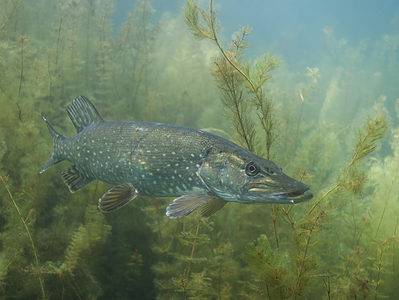Below you can find a complete list of Ukrainian animals. We currently track 236 animals in Ukraine and are adding more every day!
Geography of Ukraine
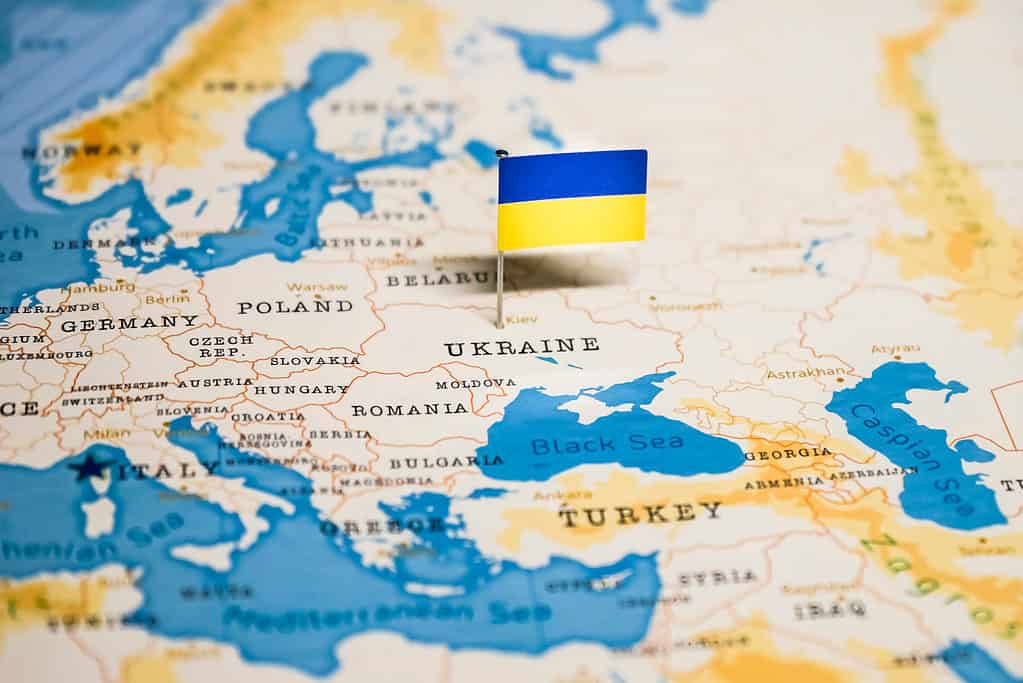
Situated in eastern Europe, Ukraine is the second biggest nation on the European mainland after Russia.
©hyotographics/Shutterstock.com
Ukraine is the second largest country by landmass in all of Europe. Having won its independence from the dissolution of the Soviet Union in 1991, the country shares a border with Russia to the east, Belarus to the north, Poland, Slovakia, and Hungary to the west, and Romania and Moldova to the south.
Most of the country is comprised of a geographical region known as the Eastern European Plain. Featuring a combination of mixed forests, wetlands, and steppes, this area contains some of the most fertile soil in all of Europe.
The southwestern part of Ukraine is also encompassed by the northern edge of the rugged Carpathian Mountains. The Dnieper River, which flows from Russia to the Black Sea, is the major river system in the country. As a kind of ecological crossroads, Ukraine contains a mix of European and steppe wildlife. Read on to learn more about Ukraine’s animals.
The Official National (State) Animal of Ukraine
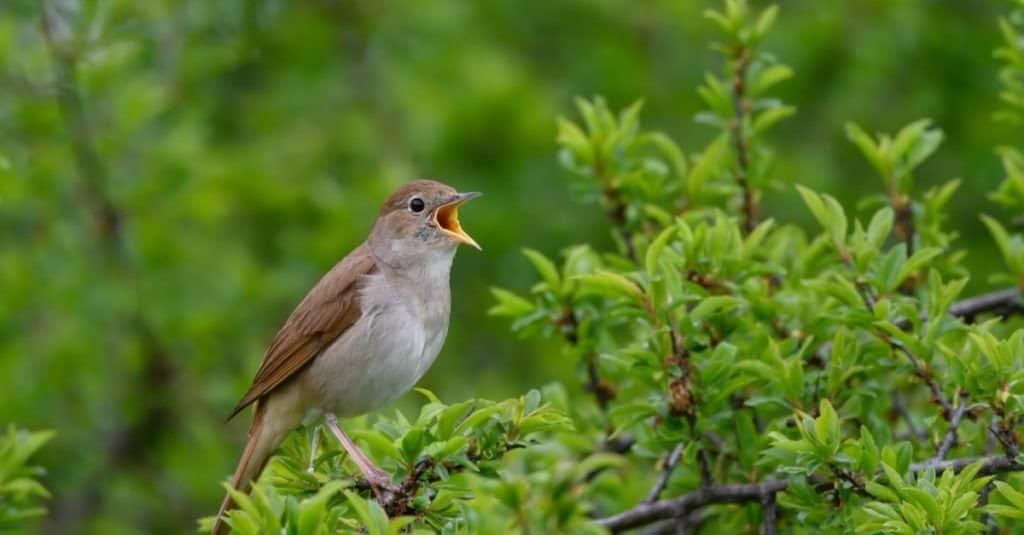
The common nightingale is the official Bird of Ukraine.
©Karel Zahradka/Shutterstock.com
The common nightingale is the national animal of Ukraine, and it holds a special place in Ukrainian folklore. Its song has long been associated with the arrival of springtime, as its sweet notes can be heard from late March through to June.
It’s thought that the birds make their nests near human habitation because they are attracted by the sound of running water. To Ukrainians, these gentle warbles are a sign that peace and happiness have returned after a cold winter, symbolizing joy and optimism for a new beginning.
The nightingale also features prominently in Ukrainian literature. It appears in folk tales, poetry, songs, and other forms of art as an expression of beauty or love.
3 Rarest Animals in Ukraine
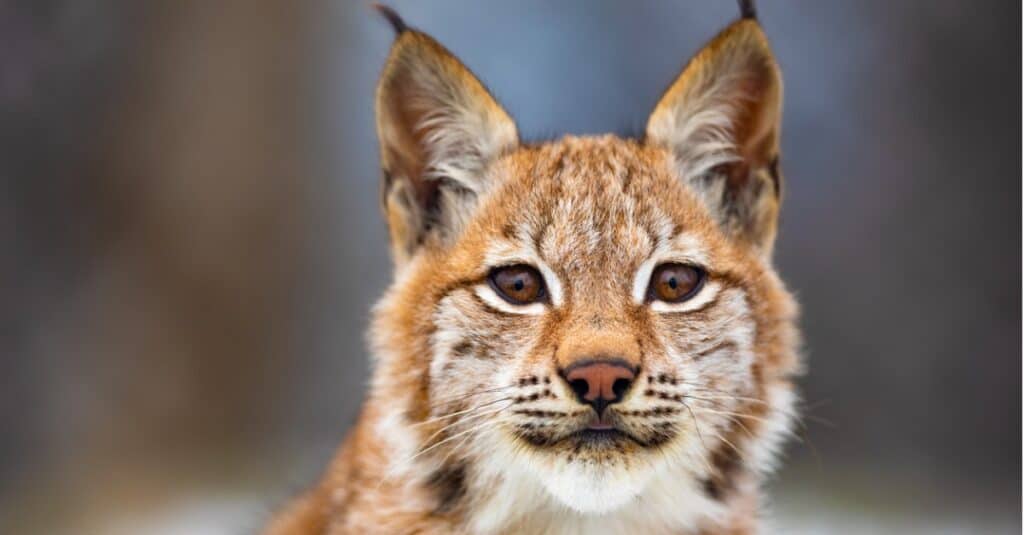
The Eurasian lynx is a rare animal to spot in Ukraine.
©iStock.com/kjekol
One of the rarest animals in Ukraine is the Eurasian lynx. This species can be found living in woodlands and mountain ranges, such as the Carpathians. Its fur is thick and usually has a yellowish-brown coloration with black markings on its face, legs, and tail. It has long tufts of black hair around its ears, which are used to detect movement from prey at great distances. The Eurasian lynx typically feeds off small mammals like hares or rabbits but will also scavenge for food if necessary.
Another animal that can be found in Ukraine is the European bison (or wisent). Historically this species was widespread throughout Europe until hunting caused their numbers to decline drastically during the 19th century. Today they are most commonly found in national parks where they roam freely while being monitored by conservationists who have worked hard to help bring back this majestic creature’s population levels in recent years. Wisents feed primarily on grasses and other plant material, although they have been known to eat insects too!
The last of our trio of rare Ukrainian animals is the Iberian wolf (Canis lupus signatus). This subspecies of the grey wolf lives mainly along Spain’s north-western coast, but there are also some populations residing eastwards toward parts of Ukraine near border regions with Poland or Romania. These wolves tend to hunt alone or sometimes with one other companion depending on how much food is available at any given.
3 Largest Animals in Ukraine

Wild boars are very adaptable omnivores found in Ukraine.
©Rudmer Zwerver/Shutterstock.com
The three largest animals in Ukraine are the Eurasian Elk, Brown Bear, and Wild Boar. All three of these species inhabit a variety of habitats throughout Ukraine, including deciduous forests, savannas, wetlands, and coniferous forests.
The Eurasian elk is the largest mammal in Ukraine. It is a large deer with antlers that can reach up to three feet long! The Eurasian elk typically lives in forested areas and prefers densely wooded areas with plenty of cover from predators. They mainly feed on grasses and leaves but will occasionally eat small animals such as insects or rodents.
The brown bear is another large predator found in Ukraine’s woodlands. These powerful omnivores can weigh up to 800 pounds and use their sharp claws for catching fish or tearing apart logs for insect larvae to eat. Brown bears primarily live near rivers or wetlands where food sources are abundant though they have also been known to venture into mountains during summer months when food is scarce at lower altitudes.
Finally, the wild boar inhabits much of central Europe, including parts of Ukraine’s countryside and mountain ranges, depending on the seasonality of its preferred acorn crop. As true omnivores, these sturdy pigs consume both plants and small prey items. They particularly like bird eggs or amphibians, which makes them particularly adaptable to changing climates year-round. They rely on roots, fruits, nuts, mushrooms, or even carrion when necessary!
Where to Find the Top Wild Animals in Ukraine
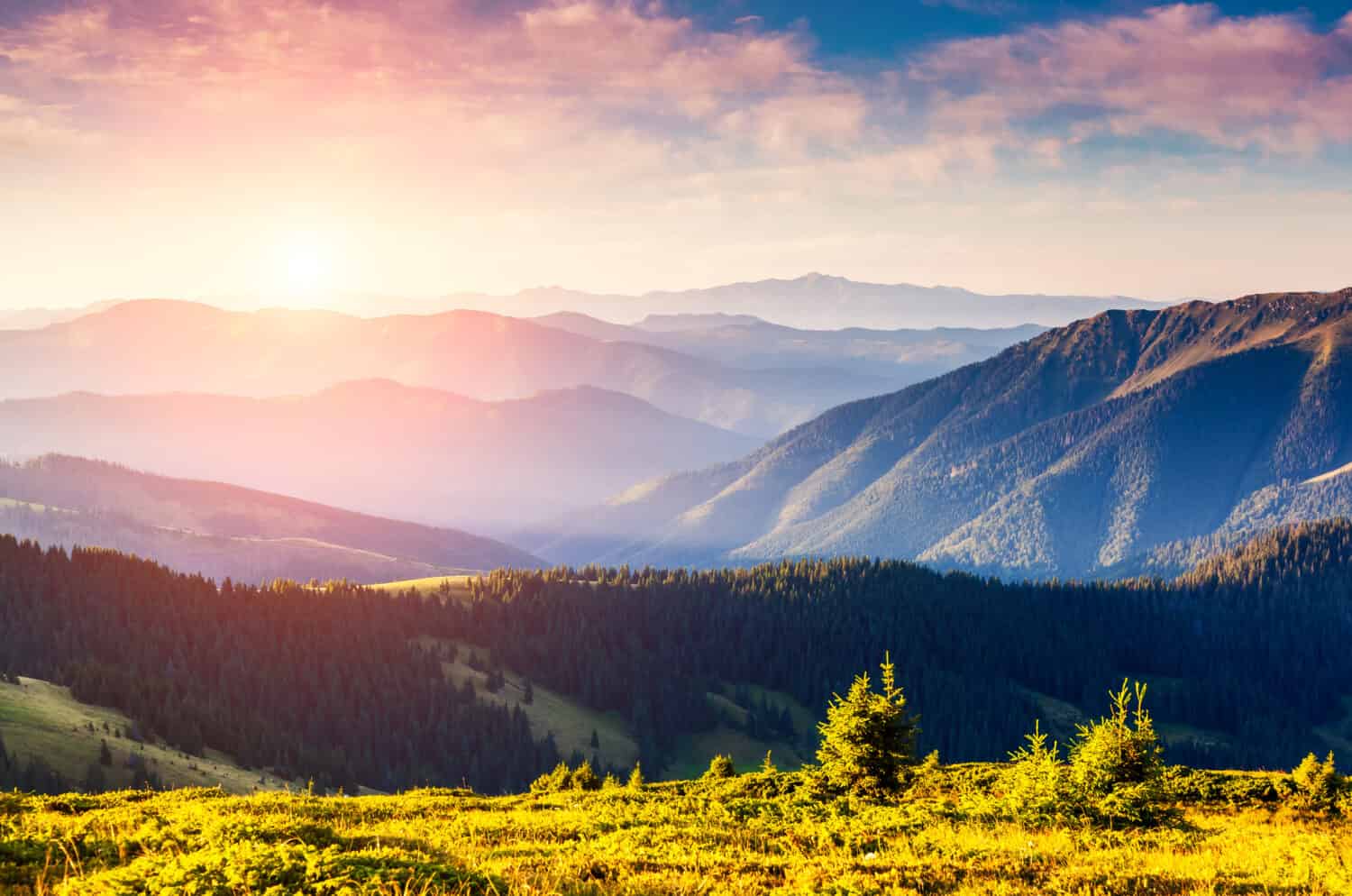
Ukraine has 50 national parks, such as Carpathian National Park, for viewing wildlife and enjoying nature. Image: Creative Travel Projects, Shutterstock
©Creative Travel Projects/Shutterstock.com
Ukraine contains almost 50 national parks and many more protected areas, comprising over 4,000 square miles.
The Carpathian National Nature Park, located near the western border with Romania, is one of the largest parks in the country and bears the name of the intersecting mountain range. Amid the winding trails through the alpine meadows and forests, visitors can experience plenty of Ukraine animals like deer, martens, eagles, owls, foxes, and other common wildlife. Sometimes one may be able to catch a glimpse of a wolf, lynx, or bear.
The Holosiivskyi National Nature Park, a large protected forest surrounding the capital city of Kiev, is a good place to find plenty of smaller wildlife, such as shrews, bats, polecats, and otters. It’s also home to woodpeckers, lizards, snakes, and beetles.
The Podilski Tovtry National Nature Park, located in the Khmelnytskyi Oblast of western Ukraine, is the largest nature reserve in the entire country. Covering Bakota Bay, the Lower Smotrych River, and other protected areas, this park is home to ferrets, hedgehogs, martens, foxes, storks, owls, falcons, and the rare European mink. Native European hedgehogs live in Ukraine. ©SakSa/Shutterstock.com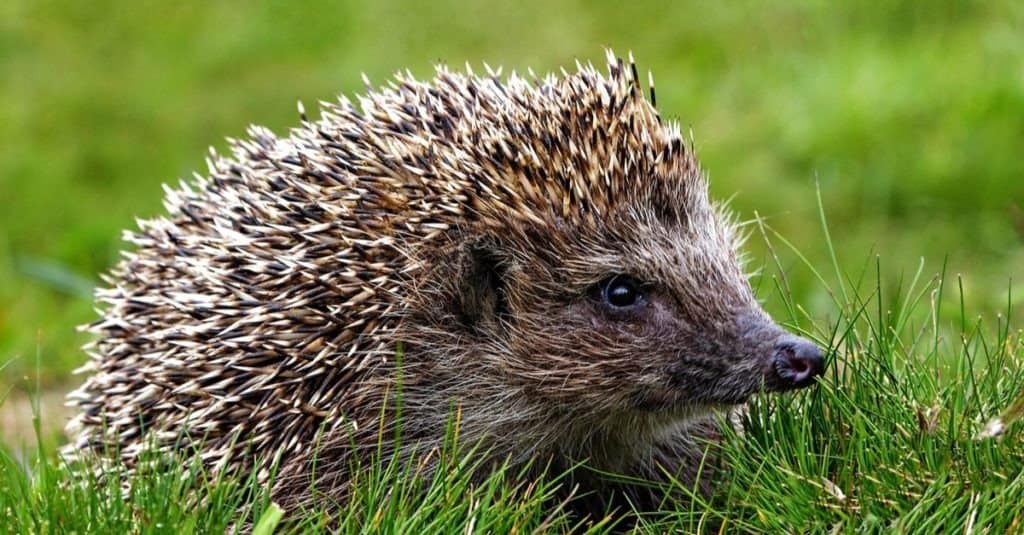
The Shatsky National Natural Park, located in the Volyn Oblast of northwestern Ukraine, contains more than 30 lakes joined to each other by canals. As a result, the area is very rich in freshwater fish like the roach, pike, and the introduced catfish. Some boar, deer, rabbits, elk, badgers, and other mammals also thrive here.
The Pryazovskyi National Nature Park, located in the southeast Zaporizhzhia Oblast next to the Sea of Azov, is the second-largest protected area in the entire country. Featuring a rich cornucopia of river estuaries and seaside plains, this park is home to many unique species of nesting and migratory waterfowl, including the great egret.
The Most Dangerous Animals in Ukraine Today
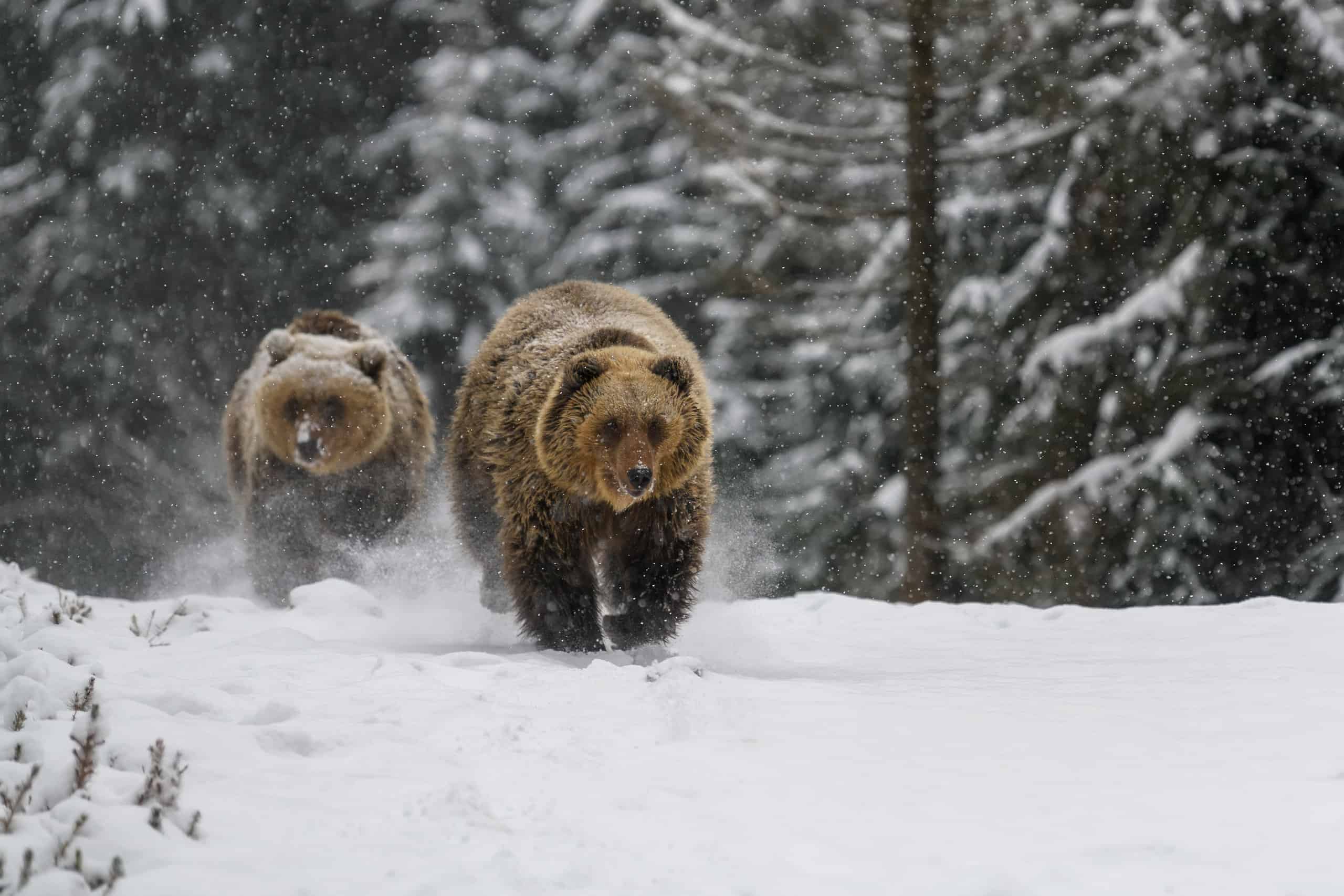
Ukraine animals like brown bears inhabit mountain areas there.
©Volodymyr Burdiak/Shutterstock.com
There is abundant wildlife in Ukraine, but only a few venomous snakes and large carnivores that are dangerous. The European viper is one of the most dangerous animals in Ukraine and can be found in grasslands, forests, and agricultural areas. It is often mistaken for adders due to its similar coloration.
The Aesculapian snake is a species of colubrid snake native to southeastern Europe, including Ukraine. It is typically found living near rivers and streams but can also be spotted in wooded areas, grasslands, and agricultural fields. The Aesculapian snake can grow up to two meters in length. Its diet consists mainly of rodents such as voles or mice. While the species does possess venom that it uses for hunting prey, bites from these snakes are rare and not considered serious since the venom has low toxicity levels for humans. However, due to its impressive size, this dangerous animal should still be avoided if encountered in the wild. Aesculapian snakes (Zamenis longissimus) are typically found living near rivers and streams but can also be spotted in wooded areas, grasslands, and agricultural fields. ©iStock.com/Zdenek Macat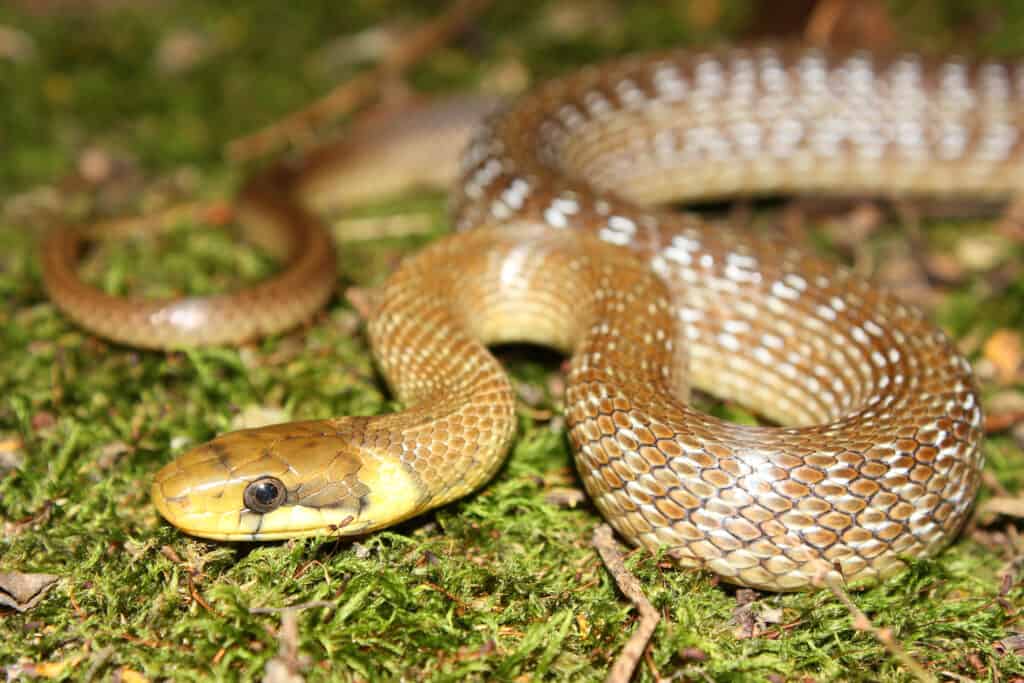
Wolves, on the other hand, prefer mountainous regions with dense vegetation where they hunt deer and small mammals like rabbits. Brown bears mainly inhabit the Carpathian Mountains, while lynx live in boreal coniferous forests across much of Europe, including Ukraine. Although these animals may seem harmless from afar, it’s important to remember that they can cause serious harm if provoked or threatened, so caution should always be taken when exploring nature reserves or parks in Ukraine.
- Common European Viper – While this isn’t the most dangerous snake, the common European viper is the most widespread, and so it causes more bites than most other vipers. Symptoms of its venom include pain, swelling, blisters, and tingling. Death will only occur in very rare untreated cases.
- Forest Steppe Adder – Native to the forested steppe regions of Ukraine, Nikolsky’s Viper (one of its alternative names) can deliver a nasty bite that causes pain and swelling. Death is very rare, but bite victims should always seek medical attention nevertheless.
- Brown Bear – While attacks are exceptionally rare (they occur in well under 1% of on-foot encounters), brown bears can be very dangerous if they feel threatened, surprised, or provoked. A mother defending her cubs appears to be the main reason for most bear attacks.
Endangered Ukraine Animals

Only a few hundred European Bison can be found in Ukraine.
©Theodor Negru/Shutterstock.com
In Ukraine, many animal species are facing endangerment as a result of human activities. Poaching and illegal hunting for animals or their body parts have become increasingly common in the region, leading to a decrease in wildlife populations. Additionally, the destruction of habitats due to deforestation and climate change have contributed to the endangerment of animals in Ukraine.
Fortunately, humans can help prevent animal endangerment by bringing awareness to the issue. Educating people on ways that they can make a difference is key. This includes supporting organizations dedicated to conserving wildlife through donations or volunteer work and implementing regulations that restrict activities like poaching or illegal hunting. With more people understanding how their actions impact wild animals, it’s possible to create positive change for endangered species living in Ukraine and around the world.
- European Mink – This endangered semi-aquatic mammal once made its home across the freshwater rivers of Europe, but it’s now restricted to small, isolated regions, largely in the eastern part of the continent. It’s believed that the reasons for its decline include habitat loss, overhunting, disease, and competition with the American mink.
- Saiga Antelope – Once native to the entire Eurasian steppes, spanning between China and the foot of the Carpathian Mountains, the saiga antelope has been hunted to near extinction for their meat and the value of their horns in some traditional medicines. The transformation of the steppes by human activity has also obstructed some of the antelope’s natural migratory routes.
- European Bison – The number of European bison has dwindled steadily over the centuries from hunting and habitat loss until it nearly became extinct. Although this species is widespread across Eastern Europe, the populations are highly fragmented and isolated from each other. Only a few hundred of them can be found in Ukraine.
- Danube Crested Newt – Featuring a jagged crest on its back and a large, paddle-shaped tail, this unique species is primarily found along the Danube River and its tributaries, only a small part of which flows into Ukraine. Another small population was also found in the Dnieper Delta by the Black Sea, although it’s at risk of becoming extinct.
Ukrainian Animals

Admiral Butterfly
Stunningly beautiful wings

Ant
First evolved 100 million years ago!

Armyworm
They are so named because they "march" in armies of worms from one crop to another in search of food

Aurochs
Extinct ancestor of all domesticated cattle!

Avocet
Has a curved, upturned beak!
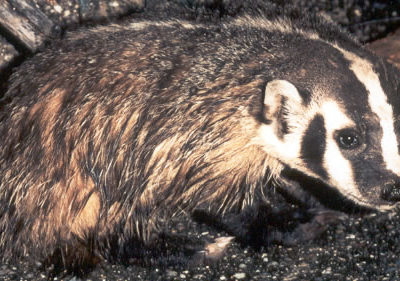
Badger
Can reach speeds of 30 km/h!

Barn Owl
Found everywhere around the world!

Barn Swallow
Older offspring help care for new hatchlings.

Bat
Detects prey using echolocation!
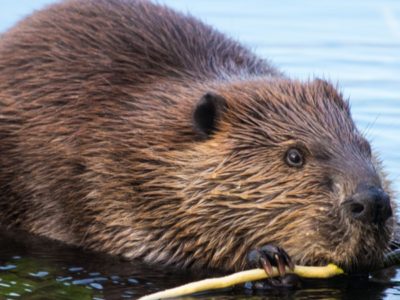
Beaver
Builds a dam from sticks and leaves!

Bed Bugs
Bed bugs feed for 4-12 minutes.

Bee
Rock paintings of bees date back 15,000 years

Beetle
There are more than 350,000 different species

Beewolf wasp
They hunt bees

Bird
Not all birds are able to fly!

Biscuit Beetle
The biscuit beetle form a symbiotic relationship with yeast

Black Widow Spider
They typically prey on insects!

Brown Dog Tick
Can live its entire life indoors

Bumblebee
The most common species of bee!

Butterfly
There are thought to be up 17,500 species!

Camel Cricket
The camel crickets that are found in the USA are light brown in color. They also have dark streaks all over their body.

Carpenter Ant
Carpenter ants can lift up to seven times their own weight with their teeth!

Cat
May have been domesticated up to 10,000 years ago.

Caterpillar
The larvae of a moth or butterfly!

Catfish
There are nearly 3,000 different species!

Centipede
There are about 3,000 documented species!

Chamois
Natively found in the European mountains!

Chicken
First domesticated more than 10,000 years ago!

Cockroach
Dated to be around 300 million years old!

Codling Moth
Pupae are able to undergo diapause to survive poor fruit yield years and winter.

Common Buzzard
The most common raptor in the UK!
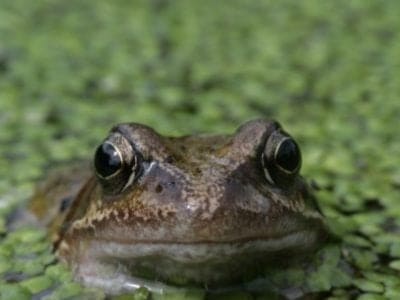
Common Frog
Found throughout the European continent!

Common Furniture Beetle
The common furniture beetle feeds exclusively on wood

Common House Spider
House spiders have the ability to eat most insects in a home.
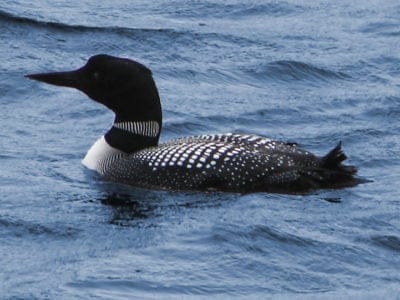
Common Loon
Also known as the Great Northern Diver

Common Raven
A group of ravens is called an unkindness or a conspiracy.

Common Toad
Most active in wet weather!

Cormorant
They can fly 35 mph and dive 150 feet below water.

Cow
There are nearly 1.5 billion worldwide!

Crab
There are 93 different crab groups

Crab Spider
Crab Spiders can mimic ants or bird droppings

Crane
Many are critically endangered species!

Cricket
Male crickets can produce sounds by rubbing their wings together

Crow
A group of these birds is called a Murder.

Deer
There are around 40 different species!
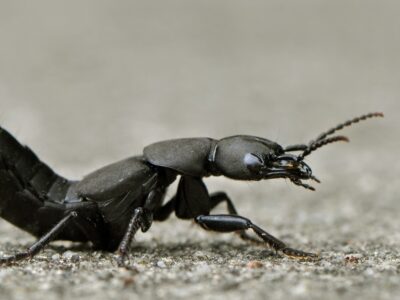
Devil’s Coach Horse Beetle
The Devil’s coach horse beetle can emit a noxious substance to deter predators

Dog
First domesticated in South-East Asia!

Dog Tick
Dog ticks feed on dogs and other mammals

Donkey
First domesticated 5,000 years ago!

Dragonfly
It's larvae are carnivorous!

Duck
Rows of tiny plates line their teeth!

Dung Beetle
The dung beetle can push objects many times its own weight

Eagle
Has exceptional eyesight!

Earthworm
They are hermaphrodites, which means they have male and female organs

Earwig
There are nearly 2,000 different species!

Edible Frog
Are known to guard the muddy banks!

Eel
Eels can be a mere few inches long to 13 feet!
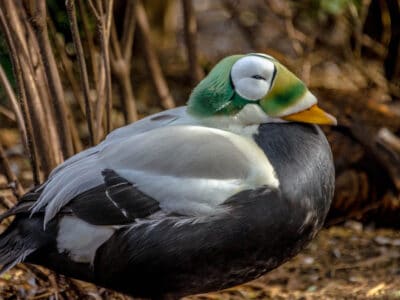
Eider
Eiders are sexually dimorphic, with males being larger and more colorful.
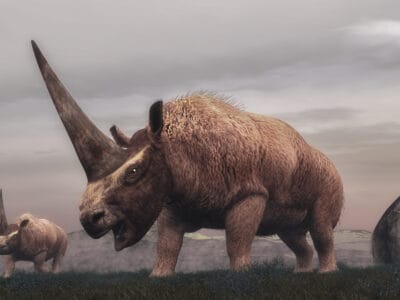
Elasmotherium
Elasmotherium might have had a monstrous horn, giving it the name "The Siberian Unicorn."

Ermine
A very bold and ferocious predator!
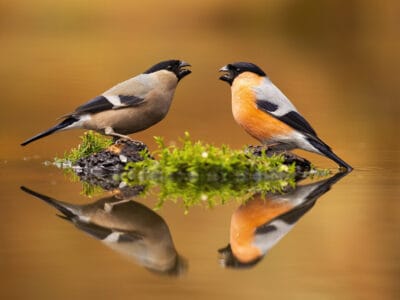
Eurasian Bullfinch
The shy eurasian bullfinch prefers to forage very close to cover.

Eurasian Eagle-owl
The Eurasian Eagle-owl is the second largest owl in the world with a wingspan up to six feet!
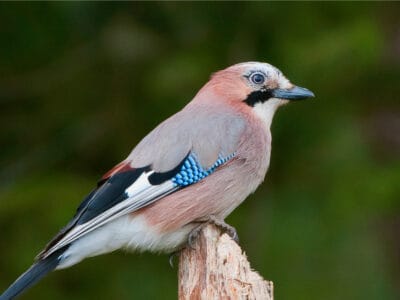
Eurasian Jay
The Eurasian jay has the ability to mimic other sounds
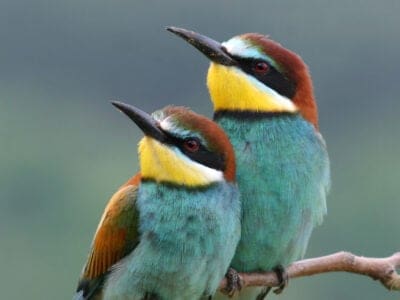
European Bee-Eater
They can eat up to 250 bees per day!
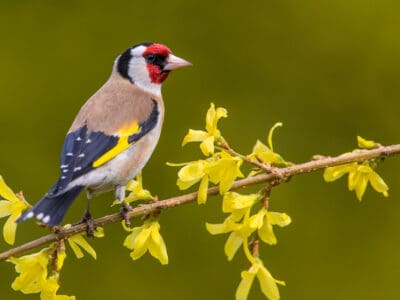
European Goldfinch
They are frequent visitors to backyard feeders, especially those containing niger seeds.

European Robin
Male robins are so aggressive and territorial that they will attack their own reflections.

Falcon
The fastest creatures on the planet!

Fallow deer
The fallow deer has more variation in its coat colors than most other deer.

False Widow Spider
False spiders actually prey on black widow spiders and other hazardous spiders
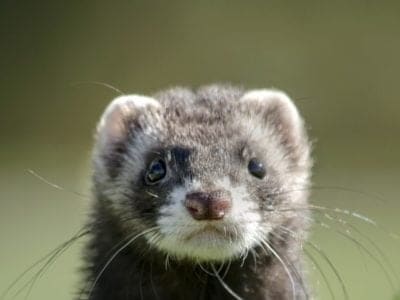
Ferret
Ferrets can be trained to do tricks like dogs!
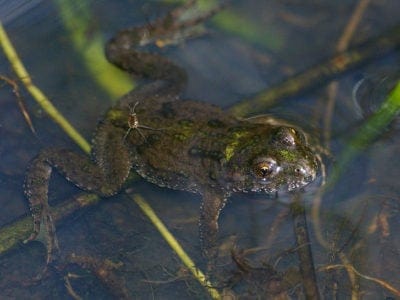
Fire-Bellied Toad
Found across mainland Europe and Asia!

Firefly
The firefly produces some of the most efficient light in the world

Flea
Adult fleas can jump up to 7 inches in the air

Fly
There are more than 240,000 different species!

Flying Squirrel
Can glide up to 90 meters!

Fox
Only 12 species are considered "true foxes"

Frog
There are around 7,000 different species!

Fruit Fly
Fruit flies are among the most common research animals in the world
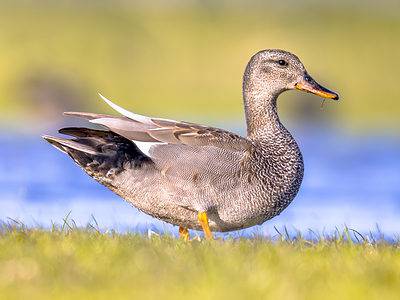
Gadwall
They make many sounds when trying to attract a mate.

German Cockroach
The most common type of urban roach

Glass Lizard
Can grow up to 4ft long!

Glowworm
Found inhabiting dense woodland and caves!

Gnat
Males form large mating swarms at dusk

Goat
Most closely related to the Sheep!

Goldcrest
The goldcrest never starts moving and needs to consume for most of the day to survive. Therefore, in the colder months, it's best that eat 90% a day.

Golden Eagle
Their calls sound like high-pitched screams, but they are quiet most of the time.

Golden Oriole
Migrates between Europe and Asia!

Goose
There are 29 different species!

Grass Spider
Their fangs aren't big enough to penetrate human skin.

Grasshopper
There are 11,000 known species!

Gypsy Moth
One of the most invasive species in the world

Hamster
Able to run as quickly backwards as forwards!

Hare
Can reach speeds of over 50 mph!

Hawk Moth Caterpillar
Many hawk moth caterpillars eat toxins from plants, but don’t sequester them the way milkweed butterflies do. Most toxins are excreted.

Hedgehog
Thought to be one of the oldest mammals on Earth!

Heron
Inhabits wetlands around the world!

Highland Cattle
Natively found in the Scottish Highlands!

Honey Bee
There are only 8 recognized species!
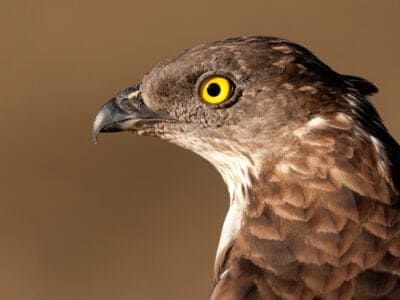
Honey Buzzard
Honey buzzards are medium-sized raptors that earned their names by raiding the nests of bees and wasps.

Hoopoe
Stunning bird with a stinky way to deter predators!

Horse
Has evolved over 50 million years!

Horsefly
Horseflies have been seen performing Immelmann turns, much like fighter jets.

Housefly
The fly has no teeth

Human
Thought to have orignated 200,000 years ago!

Huntsman Spider
Some huntsman spiders have an interesting way of moving around. Some cartwheel while others do handsprings or backflips.

Insects
There are an estimated 30 million species!

Jackdaw
The jackdaw tends to mate for life with a single partner

Jumping Spider
Some can jump 50 times the length of their bodies

Kingfisher
Inhabits wetlands and woodlands worldwide!

Ladybug
There are more than 5,000 species worldwide!

Leech
Has 10 pairs of eyes!

Lemming
Does not hibernate during the bitter Arctic winter!

Linnet
While linnets are monogamous during mating season, they do not mate for life. While breeding pairs are together, the males are highly territorial and will defend the nesting site and the surrounding area.

Lizard
There are around 5,000 different species!

Locust
Each locust can eat its weight in plants each day.

Long-Eared Owl
Ear tufts make it look bigger!
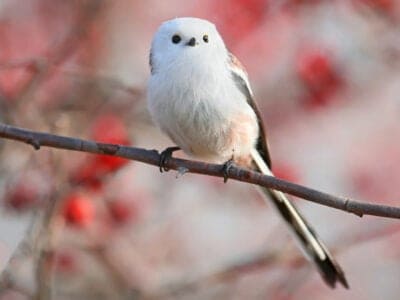
Long-Tailed Tit
Often hangs upside down while feeding!

Magpie
They are found across Europe, Asia and Africa!
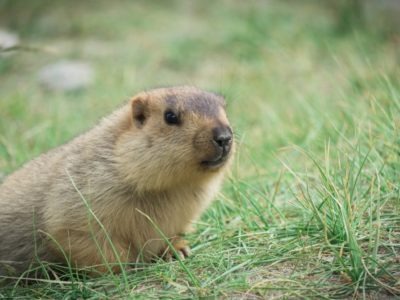
Marmot
A marmot spends 80% of its life below ground

Marsh Frog
Has bright green skin!

Mayfly
There are 2,500 known species worldwide!

Mealybug
They have a symbiotic relationship with ants.
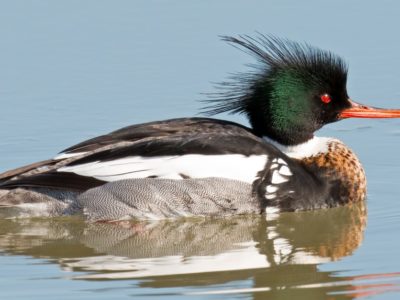
Merganser
They line their nests with their feathers

Millipede
Some species have a poisonous bite!

Mole
Primarily hunts and feeds on Earthworms!

Mole Cricket
Adult Mole crickets may fly as far as 5 miles during mating season and are active most of the year.

Mongrel
Has characteristics of two or more breeds!

Moorhen
Feeds on aquatic insects and water-spiders!

Mosquito
Only the female mosquito actually sucks blood

Moth
There are 250,000 different species!

Mouse
Found on every continent on Earth!

Mule
The offspring of a horse and donkey parents!
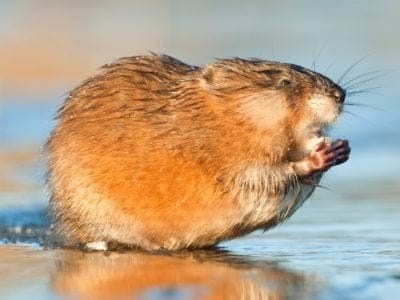
Muskrat
The muskrat can stay underwater up to 17 minutes at a time

Natterjack
Can lay up to 7500 eggs

Neanderthal
Roamed Asia and Europe for around 100,000 years!

Nematode
Nematodes range in size from 1/10 of an inch to 28 feet long

Newt
Able to regrow lost or damaged limbs!

Nightingale
Named more than 1,000 years ago!

No See Ums
There are more than 5,000 species.

Northern Pintail
Northern pintails migrate at night with speeds reaching 48 miles per hour!

Old House Borer
Depending on the habitat and climate, these beetles can live between 2 to 10 years, often staying in their larval stage for several years, making them extremely dangerous to wooden structures.

Orb Weaver
Females are about four times the size of males

Ortolan Bunting
The tradition of hiding your face with a napkin or towel while eating this bird was begun by a priest who was a friend of the great French gastronome Jean Anthelme Brillat-Savarin.

Osprey
They reuse nesting sites for 70 years!

Otter
There are 13 different species worldwide

Owl
The owl can rotate its head some 270 degrees
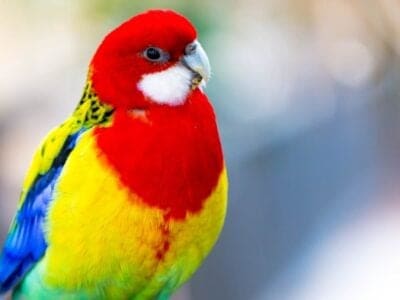
Parakeet
Monk parakeets are the only parakeets that actually build nests. They’re also the only parakeets to nest in great colonies.
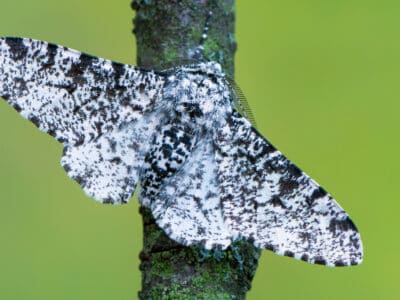
Peppered Moth
Teachers in schools often use the evolution of the peppered moth as a good example of Darwin’s theory of natural selection.

Peregrine Falcon
Fastest animal on Earth

Pheasant
Females lay between 8 and 12 eggs per clutch!

Pig
Thought to have been domesticated in 9,000 BC!

Pigeon
They can find their way back to their nests from up to 1300 miles away.

Pika
Found in mountainous regions and rocky areas

Pine Marten
A pine marten can jump from tree to tree similar to a squirrel.

Pond Skater
There are 500 different species!
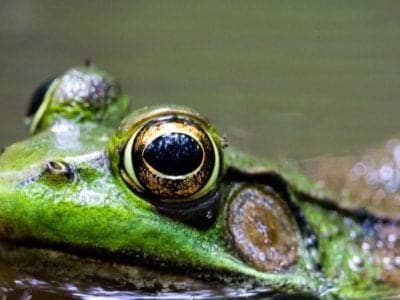
Pool Frog
The rarest amphibian in the UK!

Porcupine
There are 30 different species worldwide!

Purple Emperor Butterfly
Inhabits deciduous forests!
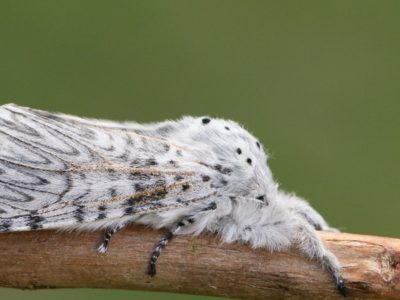
Puss Moth
Caterpillars squirt formic acid!

Quail
Inhabits woodland and forest areas worldwide!

Rabbit
There are more than 300 different species!
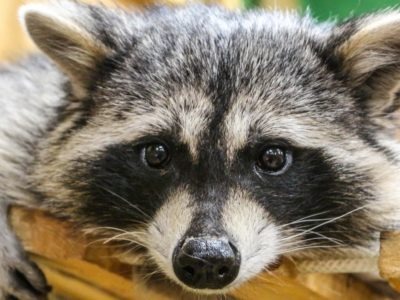
Raccoon
Known to wash their food before eating it!
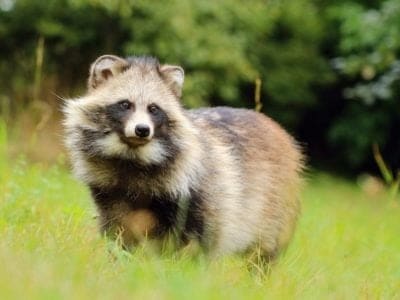
Raccoon Dog
The only hibernating canine!

Rat
Omnivores that eat anything!

Rat Snakes
Rat snakes are constrictors from the Colubridae family of snakes.

Red Deer
A male red deer shows his age in his antlers, which become longer and more branched every year.
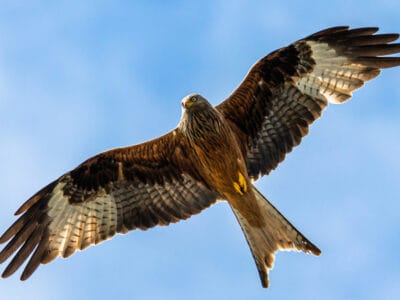
Red Kite
This bird moves its tail to steer its body like a rudder on a boat.
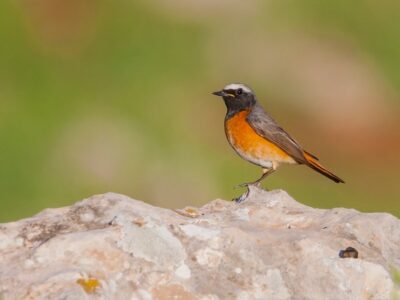
Redstart
They build their nests off the ground in tree holes, cavities, stone walls, and roofs

River Turtle
Inhabits freshwater habitats around the world!

Robin
There are more than 45 species in Australia alone!

Rodents
The capybara, the world’s largest rodent, likes to be in and around bodies of water. Because of this, the Catholic Church in South America decided that it was a fish, and people were allowed to eat it during Lent and First Fridays.
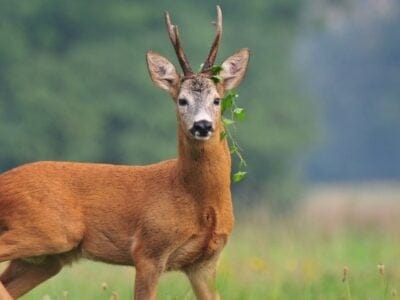
Roe Deer
The roe is one of the most popular game animals in Europe

Rooster
Will mate with the entire flock!
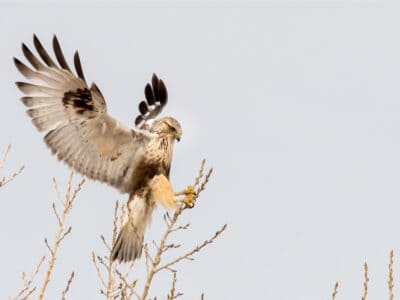
Rough-Legged Hawk (Rough-Legged Buzzard)
Its scientific name, lagopus, is Ancient Greek for “hare” and “foot,” referring to its feathered feet and toes.

Sable Ferret
Ferrets were used during the Revolutionary War to keep down the rat population.

Salamander
There are more than 700 different species!

Sand Crab
The sand crab burrows beneath the sand with its tail
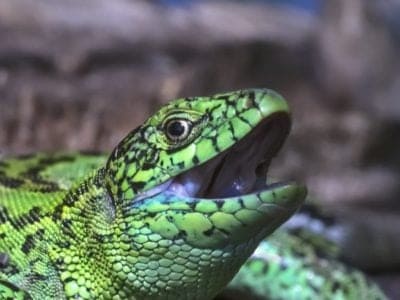
Sand Lizard
Males turn green in spring!

Scorpion
There are around 2,000 known species!

Sea Eagle
The sea eagle tends to mate for life with a single partner

Seahorse
Males give birth to up to 1,000 offspring!

Sheep
Around 35 million in the English countryside!

Short-Eared Owl
The short-eared owl is one of the most widespread owl species in the world, covering five continents.

Shrew
The spinal column of the shrew Scutisorex somereni is so strong and reinforced that it can support the weight of an adult human.

Shrimp
There are 2,000 different species worldwide!

Skink Lizard
Some skinks lay eggs in some habitats while giving birth to skinklets in other habitats.

Slow Worm
Found widely throughout British gardens!

Slug
They glide around on one foot, which is aided by the slime they produce

Smokybrown Cockroach
Has up to 45 eggs per egg case

Snail
There are nearly 1,000 different species!

Snake
There are around 4,000 known species worldwide

Snowy Owl
One of the largest owl species in the world!
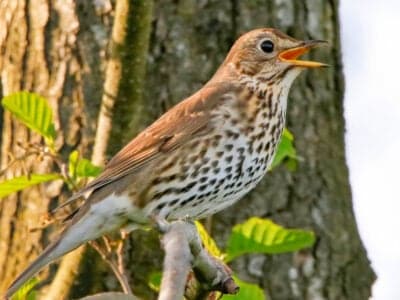
Song Thrush
A male song thrush can have over 100 phrases in his repertoire of songs and can imitate pet birds, telephones and other man-made objects.

Spadefoot Toad
They spend most of their time underground!

Sparrow
There are 140 different species!

Spider Wasp
They prey on spiders to feed their larvae or they parasitize other spider wasps.

Squirrel
Small rodents found in woodlands worldwide!

Stick Insect
There are more than 3,000 different species!

Stoat
Average adults weigh about 200 grams!

Stork
They can’t sing like other birds.

Swan
Populations have been affected by pollution!
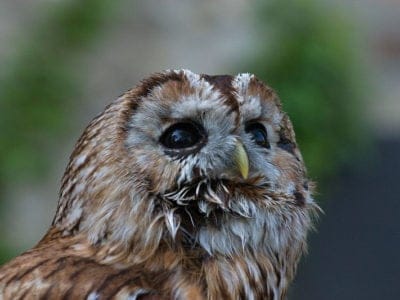
Tawny Owl
The most widespread owl in Europe!

Termite
Their mounds can be up to 9 meters tall!
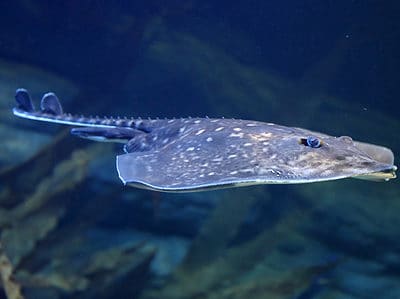
Thornback Ray
The skate with the biggest spines!

Thrush
The American robin is called the robin because its red breast reminded European settlers of the robin back in the old country.

Tick
They inject hosts with a chemical that stops them from feeling the pain of the bite

Tiger Beetle
The adult tiger beetle is one of the fastest land insects in the world
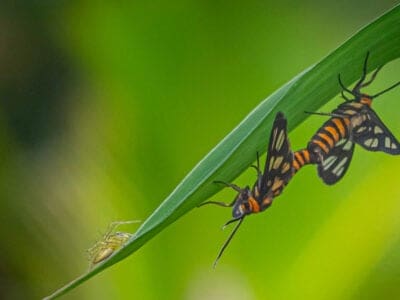
Tiger Moth
The bright colors of this moth are a signal to predators that it has a terrible taste.

Tortoise
Can live until they are more than 150 years old!

Tree Frog
Found in warmer jungles and forests!

Turtles
Some species of aquatic turtles can get up to 70 percent of their oxygen through their butt.

Ural owl
The Ural owl can rotate its head up to 270 degrees

Viper
Vipers are one of the most widespread groups of snakes and inhabit most

Vulture
There are 30 different species worldwide!

Wasp
There are around 75,000 recognised species!

Water Buffalo
Has been domesticated for thousands of years!
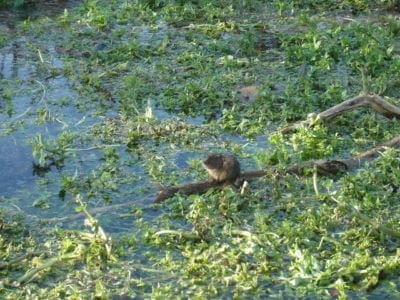
Water Vole
The largest Vole species in the UK!

Wax Moth
The Wax Moth larvae are more dangerous than the adult.

Weasel
The smallest carnivorous mammal in the world!

White Ferret / Albino Ferrets
There are two different types of white ferrets!
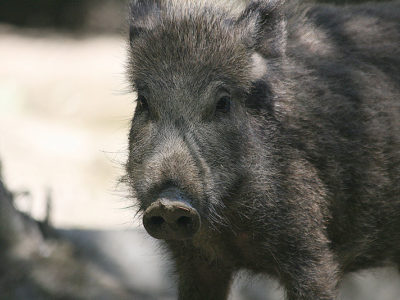
Wild Boar
Males have a top tusk to sharpen the bottom one!

Wolf
Thought to date back more than 300,000 years!

Wolf Spider
Carnivorous arachnid that hunts its prey.

Woodlouse
This animal can roll up into a ball

Woodlouse Spider
Unlike most spiders, woodlouse spiders don’t build a web.

Woodpecker
There are 200 different species!
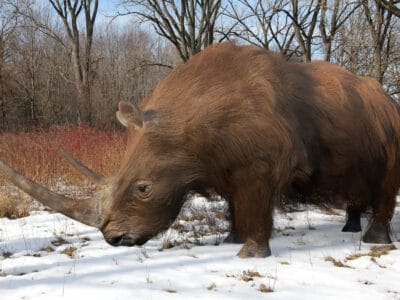
Woolly Rhinoceros
The woolly rhinoceros roamed the earth between three and a half million and 14,000 years ago.

Worm
Doesn’t have eyes.

Wryneck
They feign death by making their bodies limp and closing their eyes.

Yellowhammer
It interbreeds with the pine bunting
Ukrainian Animals List
- Admiral Butterfly
- Ant
- Armyworm
- Aurochs
- Avocet
- Badger
- Barn Owl
- Barn Swallow
- Bat
- Beaver
- Bed Bugs
- Bee
- Beetle
- Beewolf wasp
- Bird
- Biscuit Beetle
- Black Widow Spider
- Brown Dog Tick
- Bumblebee
- Butterfly
- Camel Cricket
- Carpenter Ant
- Cat
- Caterpillar
- Catfish
- Centipede
- Chamois
- Chicken
- Cockroach
- Codling Moth
- Common Buzzard
- Common Frog
- Common Furniture Beetle
- Common House Spider
- Common Loon
- Common Raven
- Common Toad
- Cormorant
- Cow
- Crab
- Crab Spider
- Crane
- Cricket
- Crow
- Cuckoo
- Deer
- Devil’s Coach Horse Beetle
- Dickinsonia
- Dog
- Dog Tick
- Donkey
- Dormouse
- Dragonfly
- Duck
- Dung Beetle
- Eagle
- Earthworm
- Earwig
- Edible Frog
- Eel
- Eider
- Elasmotherium
- Ermine
- Eurasian Bullfinch
- Eurasian Eagle-owl
- Eurasian Jay
- European Bee-Eater
- European Goldfinch
- European Robin
- Falcon
- Fallow deer
- False Widow Spider
- Ferret
- Fire-Bellied Toad
- Firefly
- Flea
- Fly
- Flying Squirrel
- Fox
- Frog
- Fruit Fly
- Gadwall
- German Cockroach
- Glass Lizard
- Glowworm
- Gnat
- Goat
- Goldcrest
- Golden Eagle
- Golden Oriole
- Goose
- Grass Spider
- Grasshopper
- Gypsy Moth
- Hamster
- Hare
- Hawk Moth Caterpillar
- Hedgehog
- Heron
- Highland Cattle
- Honey Bee
- Honey Buzzard
- Hoopoe
- Horse
- Horsefly
- Housefly
- Human
- Huntsman Spider
- Insects
- Jackdaw
- Jumping Spider
- Kingfisher
- Ladybug
- Leech
- Lemming
- Linnet
- Lizard
- Locust
- Long-Eared Owl
- Long-Tailed Tit
- Magpie
- Marmot
- Marsh Frog
- Mayfly
- Mealybug
- Merganser
- Millipede
- Mole
- Mole Cricket
- Mongrel
- Moorhen
- Mosquito
- Moth
- Mouse
- Mule
- Muskrat
- Natterjack
- Neanderthal
- Nematode
- Newt
- Nightingale
- No See Ums
- Northern Pintail
- Old House Borer
- Orb Weaver
- Ortolan Bunting
- Osprey
- Otter
- Owl
- Pantaloon Bee
- Parakeet
- Peppered Moth
- Peregrine Falcon
- Pheasant
- Pig
- Pigeon
- Pika
- Pike Fish
- Pine Marten
- Pond Skater
- Pool Frog
- Porcupine
- Purple Emperor Butterfly
- Puss Moth
- Quail
- Rabbit
- Raccoon
- Raccoon Dog
- Rat
- Rat Snakes
- Red Deer
- Red Kite
- Redstart
- River Turtle
- Robin
- Rodents
- Roe Deer
- Rooster
- Rough-Legged Hawk (Rough-Legged Buzzard)
- Sable Ferret
- Salamander
- Sand Crab
- Sand Lizard
- Scorpion
- Sea Eagle
- Seahorse
- Sheep
- Short-Eared Owl
- Shrew
- Shrimp
- Skink Lizard
- Slow Worm
- Slug
- Smokybrown Cockroach
- Snail
- Snake
- Snowy Owl
- Song Thrush
- Spadefoot Toad
- Sparrow
- Spider Wasp
- Squirrel
- Stick Insect
- Stoat
- Stork
- Swallowtail Butterfly
- Swan
- Tawny Owl
- Termite
- Thornback Ray
- Thrush
- Tick
- Tiger Beetle
- Tiger Moth
- Tortoise
- Tree Frog
- Turtles
- Ural owl
- Viper
- Vulture
- Wasp
- Water Buffalo
- Water Vole
- Wax Moth
- Weasel
- White Ferret / Albino Ferrets
- Wild Boar
- Wolf
- Wolf Spider
- Woodlouse
- Woodlouse Spider
- Woodpecker
- Woolly Rhinoceros
- Worm
- Wryneck
- Yellowhammer
Animals in Ukraine FAQs (Frequently Asked Questions)
What animals live in the Ukraine?
Ukraine contains approximately 100 species of mammals, 350 species of birds, and 200 species of fish. Some of the most well-known names include foxes, wild cats, martens, deer, wild pigs, rodents, and mouflons. The most common birds are the owls, gulls, partridges, grouse, geese, ducks, and storks. The rivers also teem with pike, carp, perch, sturgeons, sterlets, and bream.
Are there monkeys in the Ukraine?
Ukraine does not have any native species of monkeys.
Are there wolves in Ukraine?
Yes, Ukraine contains some of the largest wolf populations in all of Europe. It’s estimated to be around 2,000.
What happened to animals in Ukrainian zoos during the Russian invasion?
There was a significant effort to evacuate animals from zoos in Ukraine after Russia invaded the country in February 2022. Unfortunately, zookeepers and animals in zoos like the one in Kharkiv passed away. Animals from the Kharkiv Zoo that have been evacuated include lions, tapirs, wolves, and kangaroos.
Are there moose in Ukraine?
A small number of the European elk (a unique subspecies of the moose) inhabits northern Ukraine.








